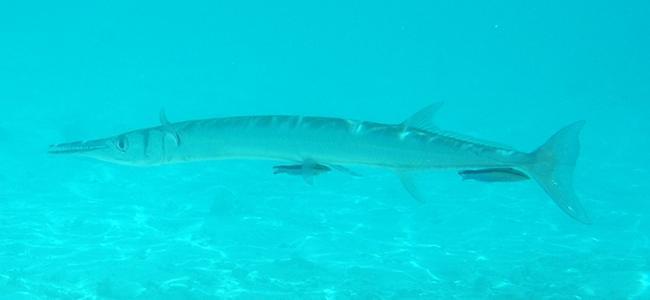Needlefishes are generally slender-bodied and elongated fishes, in which the structure of their mouth stands out. The upper jaw is attached to the skull and is usually thin and elongated. Their fins are characterized by the absence of spiny rays, and the position of the anal, dorsal and ventral fins is posterior to the body.
Needlefishes, among which we find flying fishes and needlefishes, are agile species and very fast in the water, where they move close to the surface. This habit of being in very shallow waters, has conditioned the chromatism of the species belonging to this order, usually having a contrasting color pattern that prevents them from being seen by potential prey and predators. The dorsal part tends to be greenish or bluish in color, and the ventral part and sides are silvery in color.
Many species, known as flying fish, have highly developed pectoral fins that are located in a relatively high body plane, and that together with the great speed they are able to reach, allow them to glide out of the water, reaching speeds in the air between 50 and 60 km/h, and can move between 50 and 400 meters thanks to their ability to glide in the air at a relatively short distance from the water surface.
Their diet consists mainly of algae, plankton and small fish. Just over 280 species of Needlefishes are known, which are grouped into two suborders (Adrianichthyoidei and Exocoetoidei), 6 families (Adrianichthyidae, Exocoetidae, Hemiramphidae, Zenarchopteridae, Belonidae, Scomberesocidae), and 34 genera. Although the vast majority of species are marine, up to 90 species have been described living in fresh waters.


